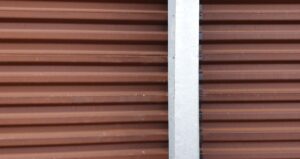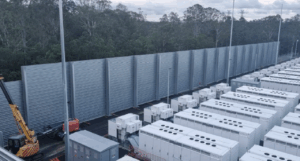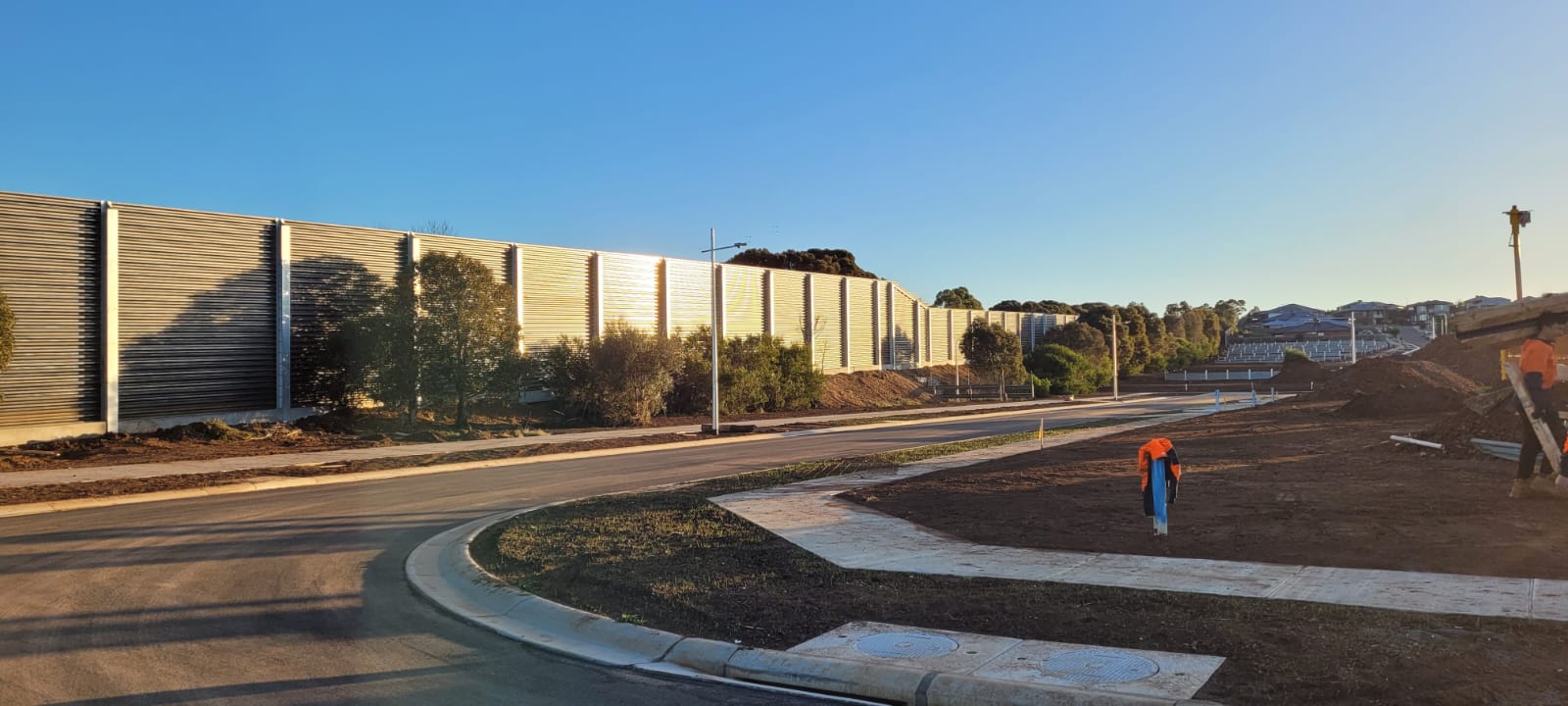Battery energy storage systems are revolutionising how we power homes, cities, and industries.
A battery energy storage system (or BESS for short) is a large-scale system that stores energy – in many cases, wind and solar energy – during off-peak times and feeds it back into the grid when needed.
They’re often made up of rows and rows of shipping-container-sized enclosures housing lithium-ion battery cells. They’re critical for improving energy reliability, reducing reliance on fossil fuels, and helping countries meet climate goals.
But here’s the catch – BESSs are noisy. The constant hum and buzz can quickly become a source of frustration for anyone nearby. That’s where noise walls come into play, providing a simple but highly effective solution.
If you’re planning a BESS or managing an existing site, check out Wallmark’s noise wall solutions.
The noisy components of a BESS
BESSs constantly emit sound from the equipment that keeps them running, hence the need for a noise wall. Here’s a quick rundown:
Cooling fans
Large batteries generate heat and need constant cooling to stay at safe temperatures. Industrial fan systems whir non-stop. They can reach 70–90 decibels (dB) up close, comparable to a lawn mower – but instead of just disrupting the neighbours on a Sunday afternoon, they run all day and night.
Inverters and power electronics
BESS sites convert direct current (DC) to alternating current (AC) using inverters. These typically emit a high-pitched electrical buzz that cuts through background sound and, quite frankly, can be irritating in otherwise quiet environments.
Transformers
To connect to the grid, BESS sites rely on transformers that emit a low-frequency electromagnetic hum, similar to what you might hear near a power substation.
Altogether, this creates a mix of humming, buzzing, and whirring. While not deafening, it’s persistent. Because of its tonal character (its distinguishable pitch or frequency), it tends to cut through other background noise and draw attention.
Why is this a concern?
Low-level noise may seem minor, but research shows it can have a real effect on people living nearby. The World Health Organisation (WHO) recommends an annual average of less than 40dB in outdoor environments at night to allow good sleep and prevent adverse health effects.
The concerns include:
- Sleep disturbance: Even moderate nighttime noise – especially when it’s tonal, like the whine or hum that comes from BESSs – can disrupt sleep.
- Annoyance and stress: Persistent background noise can increase stress and frustration.
- Breaches of environmental regulations: The mechanical hum of a BESS may not comply with local council protocols.
- Property values: Many homeowners worry that living next to a noisy industrial facility will make their homes harder to sell.
Even if you park a BESS in the middle of nowhere, there are nearby offices, substations, and workers who need protection from noise pollutions. This is why a noise wall is the most practical solution.

How noise walls help
A noise wall acts as an acoustic shield, blocking and absorbing sound before it reaches homes, businesses, or sensitive environments. Imagine it like holding up an umbrella in the rain – you can’t stop the rain, but you can stay dry underneath.
Well-designed noise barriers dramatically reduce noise levels for nearby residents, which is a huge win for both communities and developers.
- Regulatory compliance – Noise walls help ensure the project meets local noise limits. This avoids violations, fines, costly project delays, or even cancellation due to noise complaints and opposition from councils and community.
- Protecting quality of life – For residents, the benefit is immediate – a dramatic drop in the noise they hear day-to-day. That means more peace and quiet at home: the ability to sleep with windows open, hold an outdoor conversation, or just enjoy one’s backyard without a constant hum in the background.
- Community goodwill – By proactively reducing noise, developers demonstrate respect for neighbors’ well-being. Quieter operations mean fewer complaints and a better relationship with the community.

Wallmark Project: Greenbank BESS, Queensland
One standout example is Wallmark’s work on the Greenbank Battery Energy Storage System in Queensland.
The facility was designed to strengthen Queensland’s renewable energy network with 108 Tesla Megapack batteries. But all those batteries are bound to make a lot of noise.
Wallmark engineered a 20-foot noise wall that forms an enclosure around the battery site. The result? The Greenbank BESS now meets stringent environmental noise requirements and has been operating efficiently without disturbing nearby residents and workers.
The project shows how the right noise wall doesn’t just block sound – it strengthens community relationships and guarantees project success.
Read more about the project here.
Block out the noise
BESSs are transforming our energy future but they bring real-world challenges – noise being one of them. A BESS without effective noise control can face community backlash, delays, and extra costs. Noise walls offer a proven, cost-effective solution that ensures compliance and pleases the neighbours.
For an efficient noise wall, you need an expert team. If you’re planning a BESS or tackling noise issues at an existing site, talk to Wallmark about how we can help you protect your project and your community from noise pollution.









You must be logged in to post a comment.